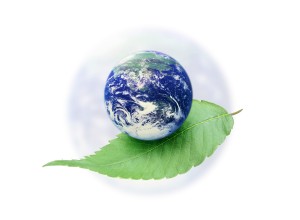
Environments vary throughout the world, but all are reacting similarly to changing levels of pollution, habitat destruction and ecosystem degradation. The environment is facing issues such as soil depletion, biodiversity loss, increased noise levels, acidification, habitat loss, and water and air pollution.
The transport sector has a significant negative impact on the local environment by contributing to these changes, with the most notable problem being air pollution. The pollutants released primarily through the burning of fuel in vehicle use, such as particulate matters and greenhouse gases, are impacting human health and increasing the speed of changes due to climate change. More details can be found in the Air Pollution section.
Increased use of transportation leads to long-term impacts on soil and land quality. Transport activities can contaminate soil, water and air through accidents involving dangerous goods, from transport infrastructures, or from heavy metals in vehicle exhausts, de-icing substances, fuel spillages, and released fuels and pollutants from road and rail vehicles, ships and aircraft. These pollutants come in contact with the soil, leading to its degradation, erosion and depletion. When these pollutants mix with the water, water quality decreases and it becomes polluted.
The more land that is used for the construction of road networks is less land left for habitation by local wildlife, forcing the species to relocate or become more compact. Habitat loss can lead to biodiversity loss because there is less ability for the local ecosystems to thrive.
Acidification is caused when the natural chemical balance of the environment is disturbed due to a higher prevalence of acidic elements. Many pollutants that are emitted from vehicle emissions are acidic, such as sulfur dioxides and nitrogen oxides. An increase in these pollutants would result in an increase in the overall concentration of acidic elements, leading to acidification in the oceans, the precipitation, and the soil. Ecosystems both on land and in water are sensitive to chemical changes and a lack of adaptation to the rapid changes can lead to additional biodiversity loss.
High volumes of traffic and road infrastructure construction contribute to an increase in noise levels in the surrounding areas. Noise pollution alters animal behavior. For instance, the population and diversity of bird species has been shown to decline when exposed to continuous noise generated by urban environments, such as roads, cities and industrial sites. However, noise pollution may not necessarily drive animals away from their habitat, but it may alter their established behaviors and be having a less-obvious negative effect on their physical well-being. Noise pollution has a detrimental impact on human health as well by leading to increased stress and decreased rest levels.
The environmental issues highlighted disproportionally impact settlements close to major transport infrastructure. However, a collective effort is being made to consider environmental and human impacts when designing and implementing transportation systems. Environmental protection, mitigation and sustainability are words that have become part of our everyday life, as it is well understood that current human needs have a serious effect on the environment. It is essential to bring about ways to balance our needs and activities with respect to their adverse effects on the environment.

